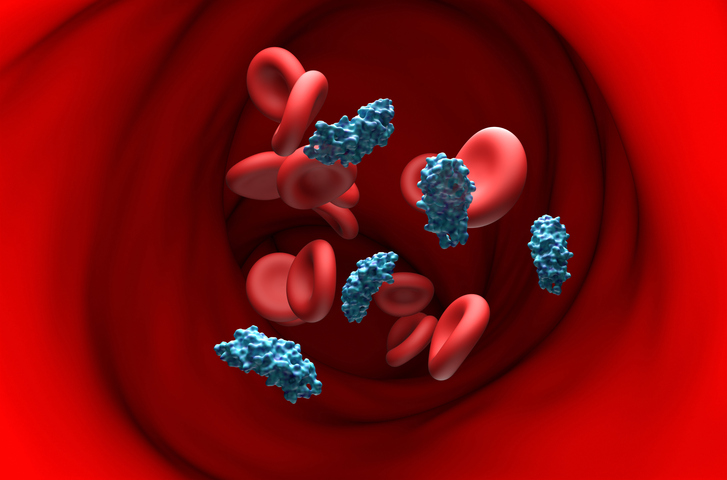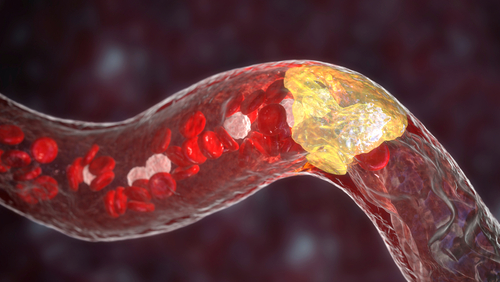
A new study finds persistent underuse of statins among patients with established atherosclerotic cardiovascular disease (ASCVD) in a large, insured cohort.[1] It has been well established that reduced adherence to guideline-direct statin therapy among eligible patients is associated with increased mortality. Accordingly, the American College of Cardiology provides a Class I recommendation for high-intensity statin use among individuals less than 75 years of age with prior ASCVD.[2] [3] Yet, rates of statin therapy adoption have slowed in recent years.
Previous studies have found a similar trend of underutilization of statin therapy in large primary prevention cohorts. One study of 280,000 individuals with high ASCVD risk found more than one-third of statin-eligible patients were not prescribed statin therapy, resulting in excess atherosclerotic cardiovascular events and mortality. Further, under-prescription of statin therapy was shown to exacerbate existing health disparities, with only 23% of intermediate-risk Black patients receiving statin therapy compared with 32% of intermediate-risk white patients.[4]
With this backdrop, Nelson et. al published a study in the Journal of the American College of Cardiology that identified more than 600,000 geographically diverse individuals with a prior diagnosis of ASCVD. More patients (69.2%) were diagnosed with coronary artery disease than peripheral arterial disease (PAD) (35.2%) or cerebrovascular disease (19.5%). In total, 49.9% of individuals were not on any statin and only 22.5% were prescribed high-intensity statin. Women compared with men were less likely to be prescribed statin therapy (43.2% vs 55.1%) and were less likely to receive a high-intensity statin (29.2% vs 41.7%). Similarly younger patients were less likely to be on statin therapy as compared with middle-aged and older patients, despite the presence of premature ASCVD in younger patients. In this study, individuals with PAD were half as likely as individuals with CAD to receive any statin therapy (OR: 0.55), with only 44.5% of individuals receiving any statin prescription.
In an accompanying editorial, Dr. Salim Virani, Professor of Cardiology at Baylor College of Medicine, and colleagues identify barriers to statin prescription.[5] He states that the dearth in statin therapy “is extremely concerning as this is one of the most basic therapies that our patients with ASCVD deserve. This gap likely exists due to a combination of statin-associated side effects, therapeutic inertia, and the influence that social medial and patient’s environment has on how patient’s perceive risks and benefits of statin therapy.” Further, Dr. Virani highlights that “unfortunately, there are subgroups of ASCVD patients where these gaps are even more exaggerated including young patients with ASCVD, women with ASCVD, and patients with peripheral arterial disease or ischemic stroke as the etiology of their ASCVD. Holistic system-level interventions are needed to improve both evidence-based prescription and adherence to these lifesaving medications.”
The limited adoption of statin therapy in patients with known ASCVD remains striking, presenting an opportunity to intervene at patient, clinician, and health systems levels. Though this data was collected from a commercially insured population, it remains important to assess adherence to guideline-directed statin therapy in uninsured and underinsured cohorts, as well. Adequate access to appropriate, guideline-directed medical therapy should remain a public health priority regardless of gender, race, ethnicity, insurance status, or age.
Guideline-Concordant Statin Therapy Use in Secondary Prevention: Should the Medical Community Wait for Divine Intervention? – ScienceDirect @virani_md Laura Petersen. Time for new approaches! @BCMHeart https://t.co/OszE27KTbo
— Christie Ballantyne (@CBallantyneMD) May 2, 2022
References:
- Nelson AJ, Haynes K, Shambhu S, Eapen Z, Cziraky MJ, Nanna MG, et al. High-Intensity Statin Use Among Patients With Atherosclerosis in the U.S. J Am Coll Cardiol. 2022;79(18):1802-13. doi: 10.1016/j.jacc.2022.02.048.
- Grundy SM, Stone NJ, Bailey AL, Beam C, Birtcher KK, Blumenthal RS, et al. 2018 AHA/ACC/AACVPR/AAPA/ABC/ACPM/ADA/AGS/APhA/ASPC/NLA/PCNA Guideline on the Management of Blood Cholesterol: A Report of the American College of Cardiology/American Heart Association Task Force on Clinical Practice Guidelines. J Am Coll Cardiol. 2019;73(24):e285-e350. doi: 10.1016/j.jacc.2018.11.003.
- Stone NJ, Robinson JG, Lichtenstein AH, Bairey Merz CN, Blum CB, Eckel RH, et al. 2013 ACC/AHA guideline on the treatment of blood cholesterol to reduce atherosclerotic cardiovascular risk in adults: a report of the American College of Cardiology/American Heart Association Task Force on Practice Guidelines. J Am Coll Cardiol. 2014;63(25 Pt B):2889-934. doi: 10.1016/j.jacc.2013.11.002.
- Saeed A, Zhu J, Thoma F, Marroquin O, Aiyer A, Agarwala A, et al. Cardiovascular Disease Risk-Based Statin Utilization and Associated Outcomes in a Primary Prevention Cohort: Insights From a Large Health Care Network. Circ Cardiovasc Qual Outcomes. 2021;14(9):e007485. doi: 10.1161/CIRCOUTCOMES.120.007485.
- Virani SS, Ballantyne CM, Petersen LA. Guideline-Concordant Statin Therapy Use in Secondary Prevention: Should the Medical Community Wait for Divine Intervention? J Am Coll Cardiol. 2022;79(18):1814-7. doi: 10.1016/j.jacc.2022.02.042.







 © 2025 Mashup Media, LLC, a Formedics Property. All Rights Reserved.
© 2025 Mashup Media, LLC, a Formedics Property. All Rights Reserved.